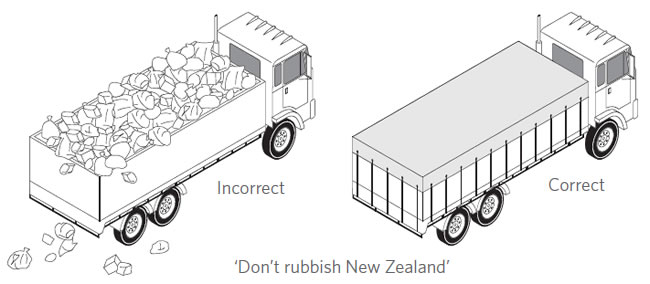Loose bulk loads can generally be described as having a nature which does not readily lend itself to any form of packaging or containerisation, eg sand, aggregate, shingle, rubble, rubbish, asphalt and other similar materials.
Clearly, the loading and securing of such loads do not pose the many problems associated with general freight, but nevertheless they do have security problems peculiar to themselves.
The maximum vehicle and axle weights must never be exceeded. Loose bulk loads being transported in a vehicle without a tarpaulin fitted should at no time reach higher than 100mm below any side of the vehicle. If the load is heaped to its own natural ‘angle of repose’, this could result in load shedding due to the vehicle’s movement. Doors to bulk bins must be closed to avoid loose bulk loads from being blown out.
As these loads normally rely upon the vehicle body for restraint it becomes extremely important to ensure all body-to-chassis attachment points, eg ‘U’ bolts, hinge pins, hinge pin brackets, are always secure and that these and the body are in sound condition.
Loose bulk loads should be tarped, netted or sheeted as appropriate whenever there is a risk of load shedding due to wind action or movement (see figure 70). Body work should be kept in good condition in order to minimise the hazards during transportation. This applies particularly to badly fitting tail gates that permit gravel and stones to fall to the roadway.
Body height extensions (topper boards) should only be used where conditions and type of load permit. In these circumstances, their supports must be adequately fixed to the existing body. It is not considered adequate to rely upon the load within the parent body of the vehicle for support. Where necessary, tie-chains should be used transversely at the top of body extensions to prevent sideways spread.
 Figure 70 Securing loose bulk loads
Figure 70 Securing loose bulk loads